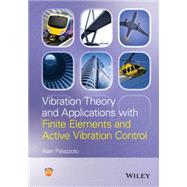Based on many years of research and teaching, this book brings together all the important topics in linear vibration theory, including failure models, kinematics and modeling, unstable vibrating systems, rotordynamics, model reduction methods, and finite element methods utilizing truss, beam, membrane and solid elements. It also explores in detail active vibration control, instability and modal analysis. The book provides the modeling skills and knowledge required for modern engineering practice, plus the tools needed to identify, formulate and solve engineering problems effectively.








